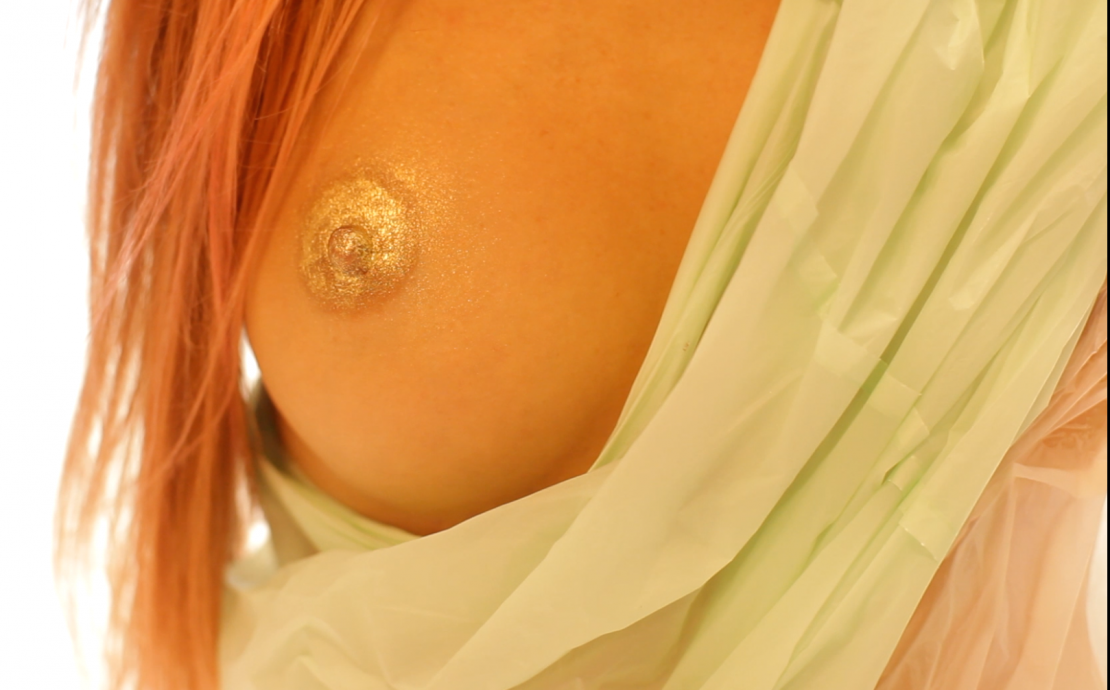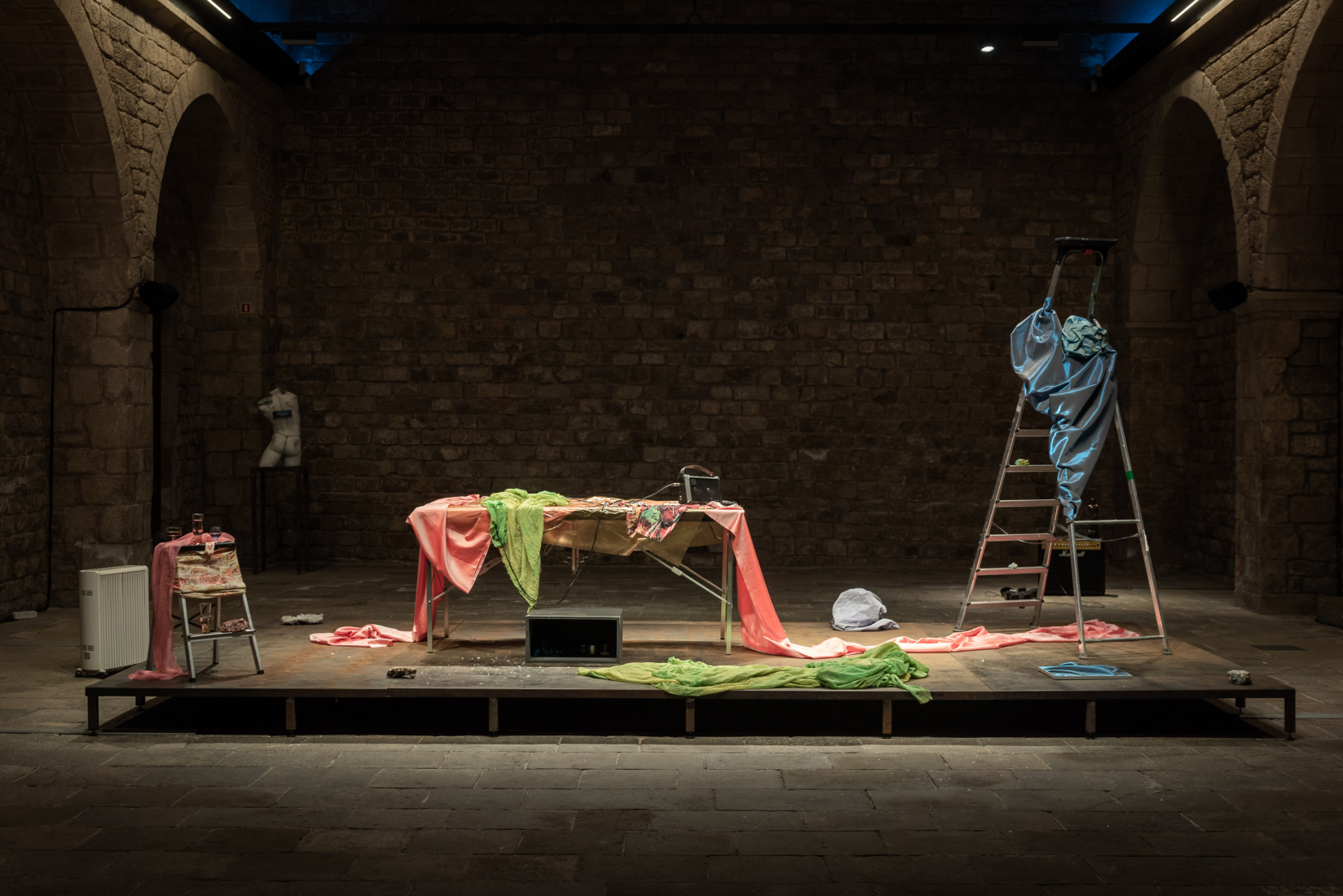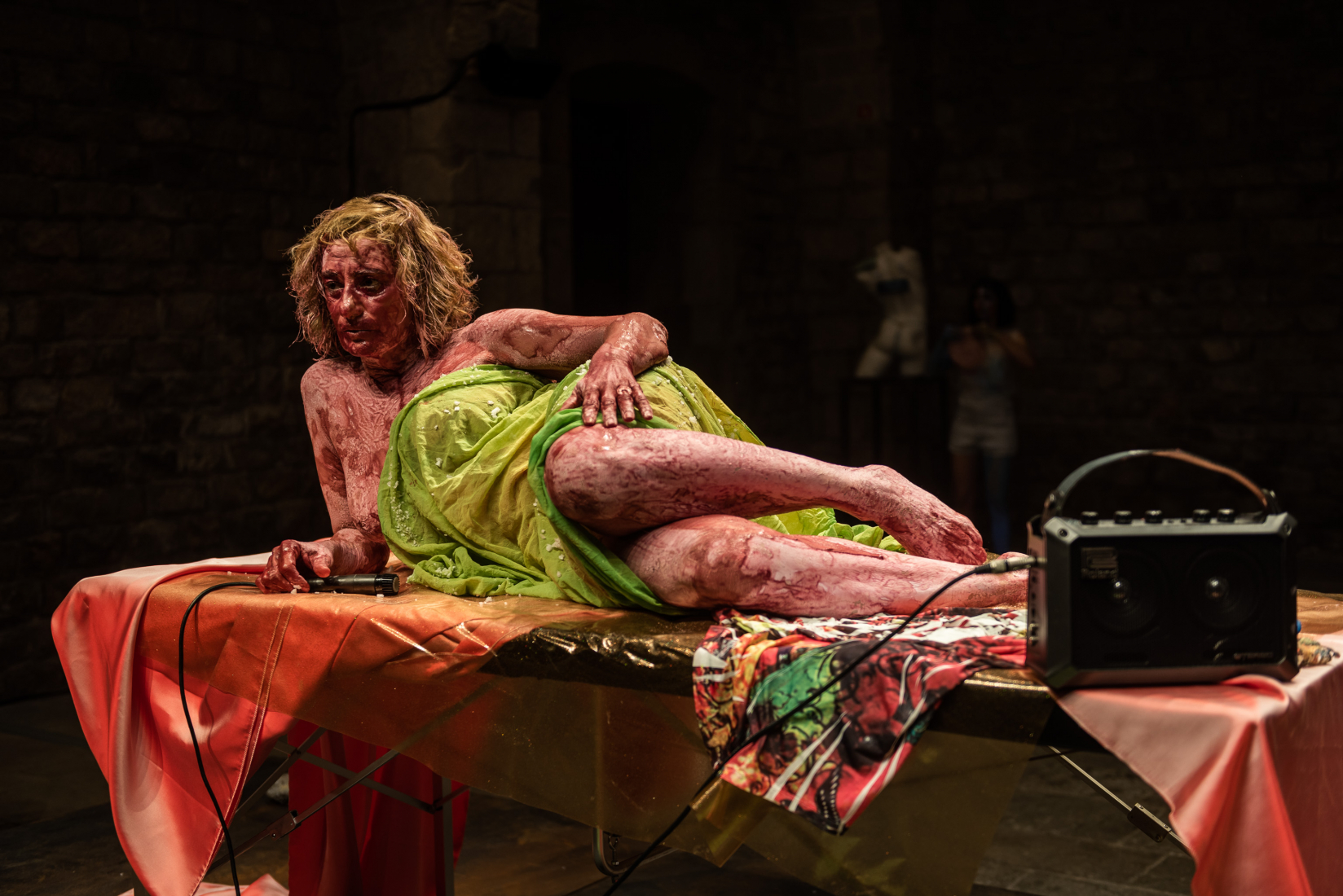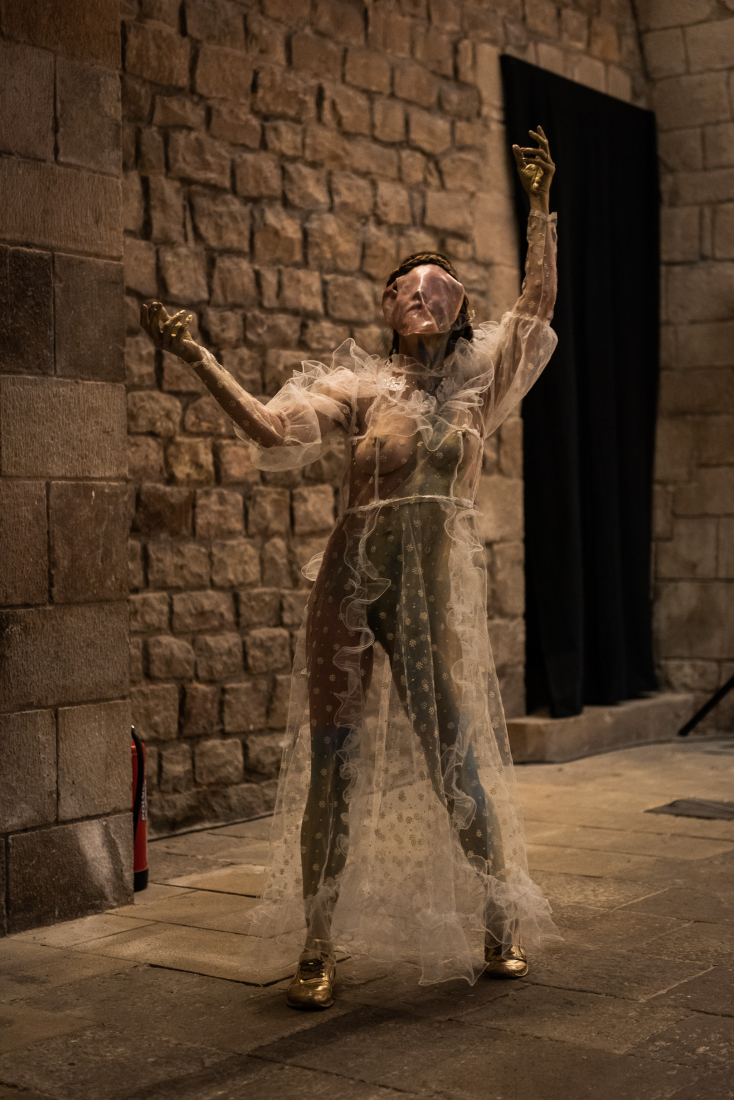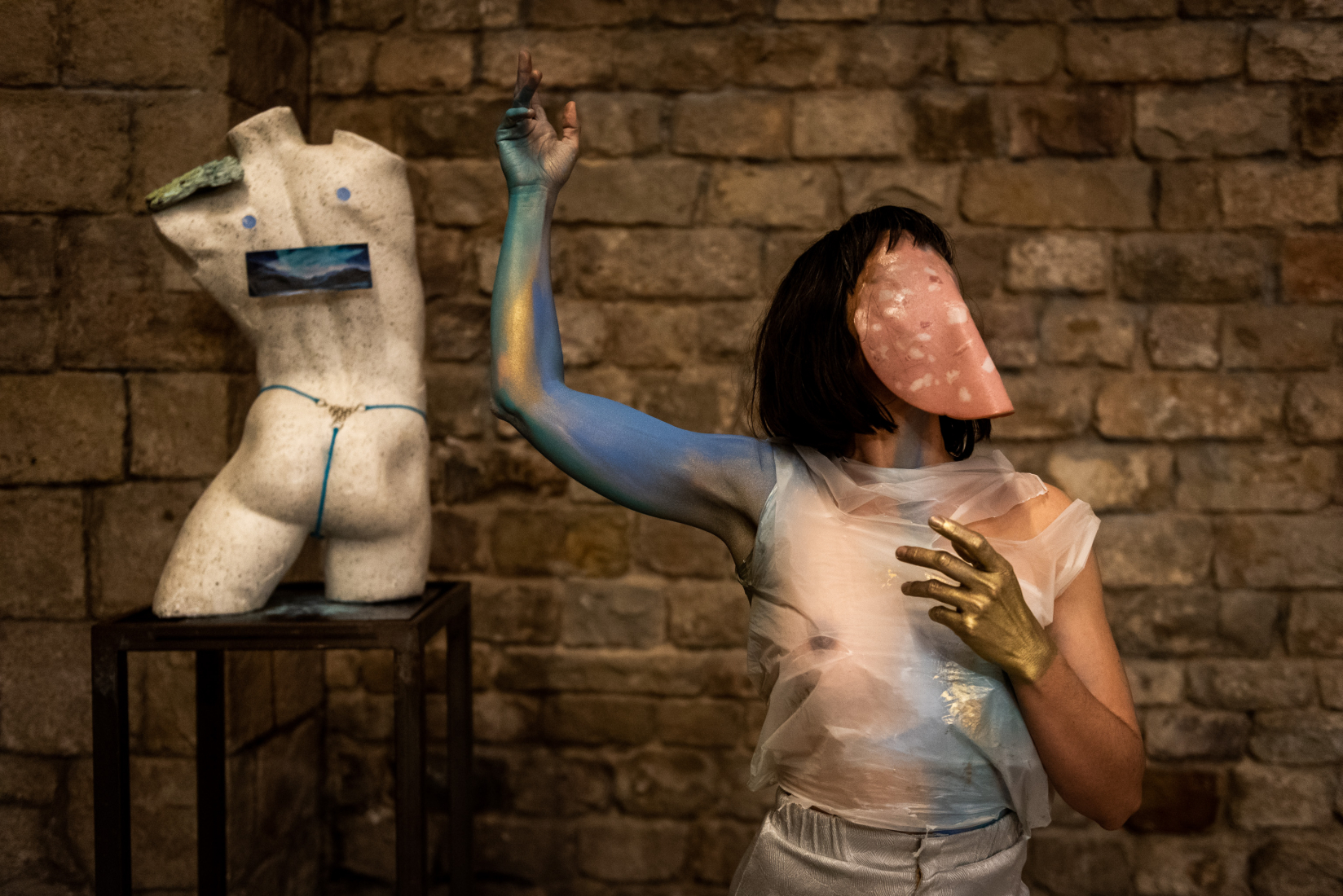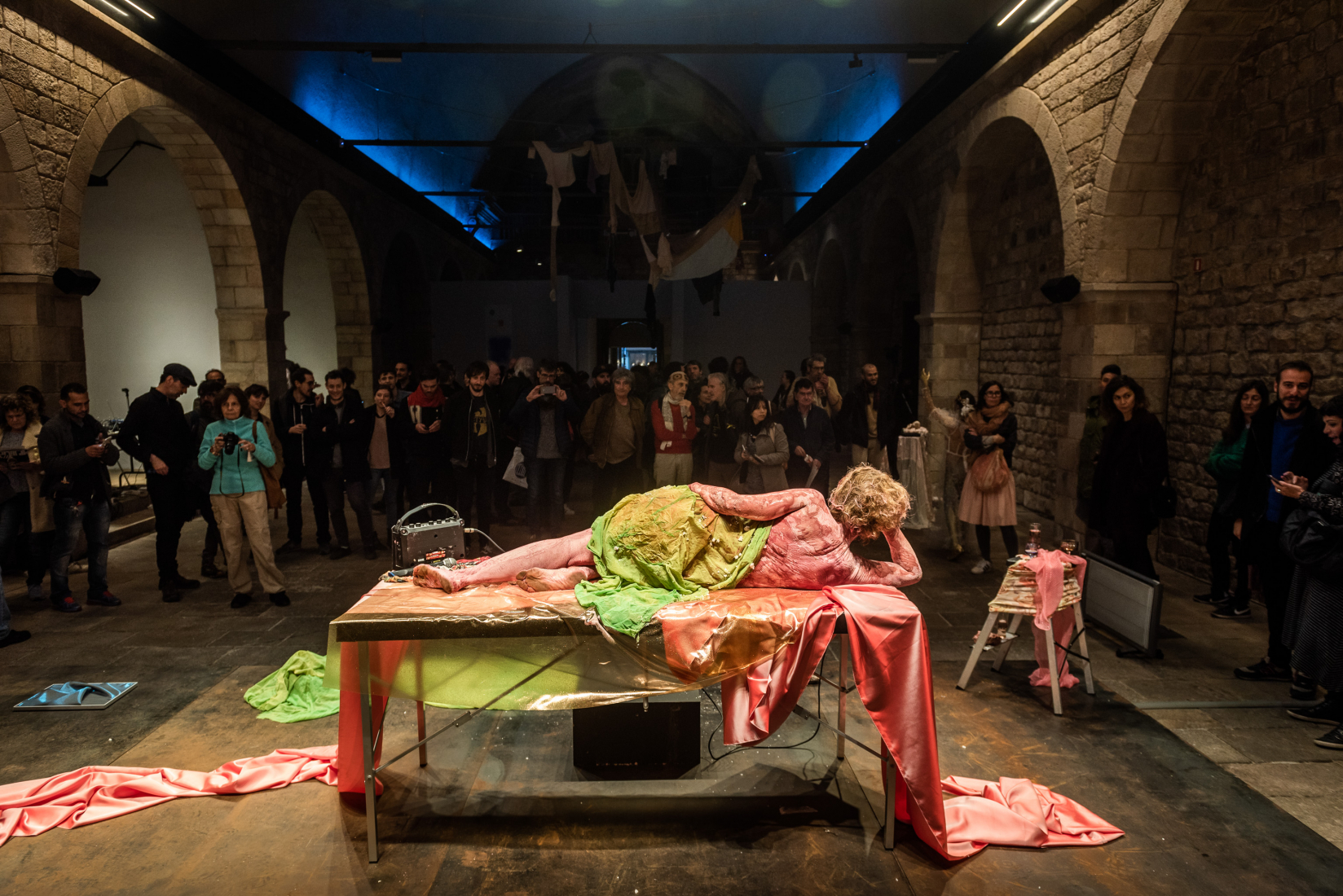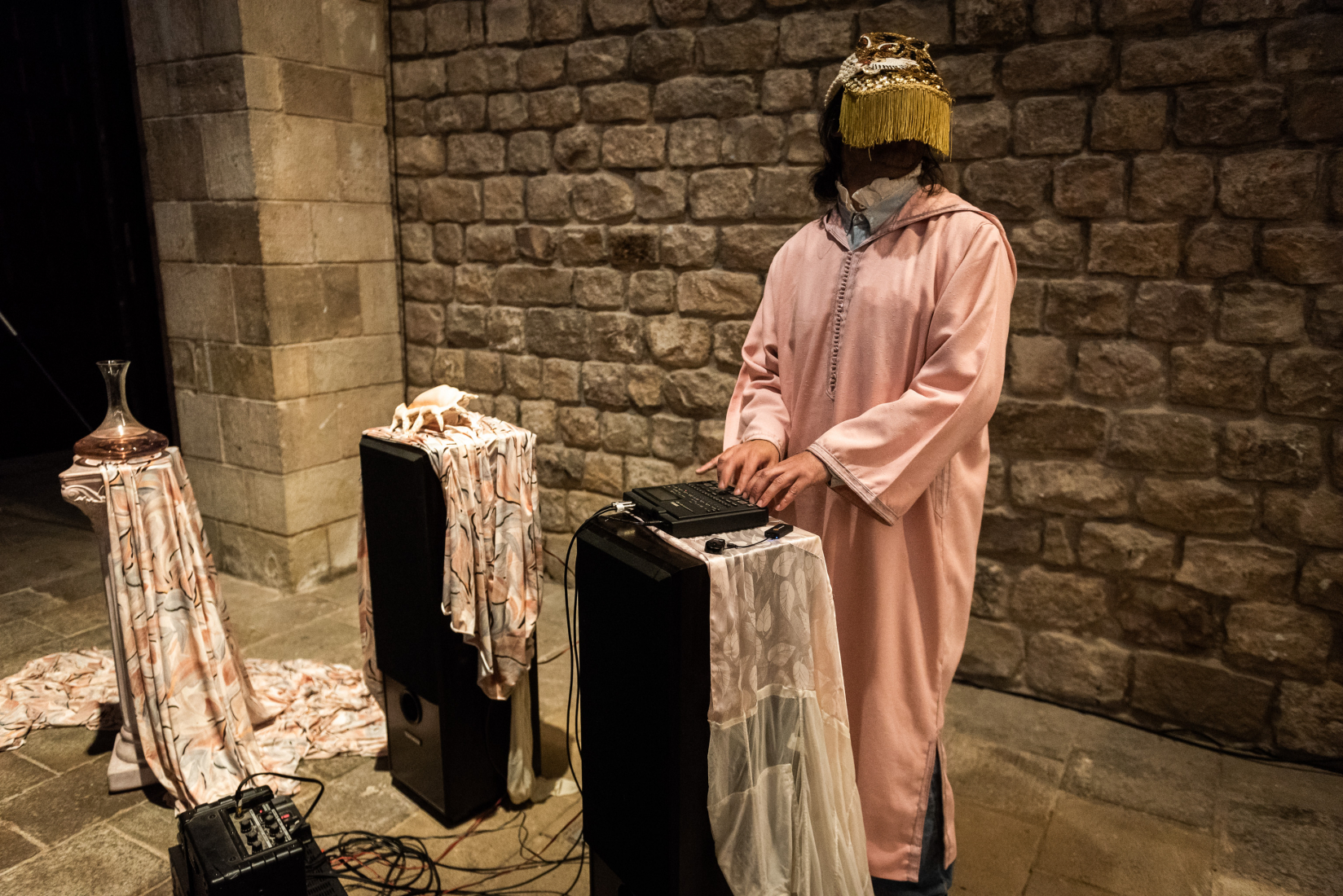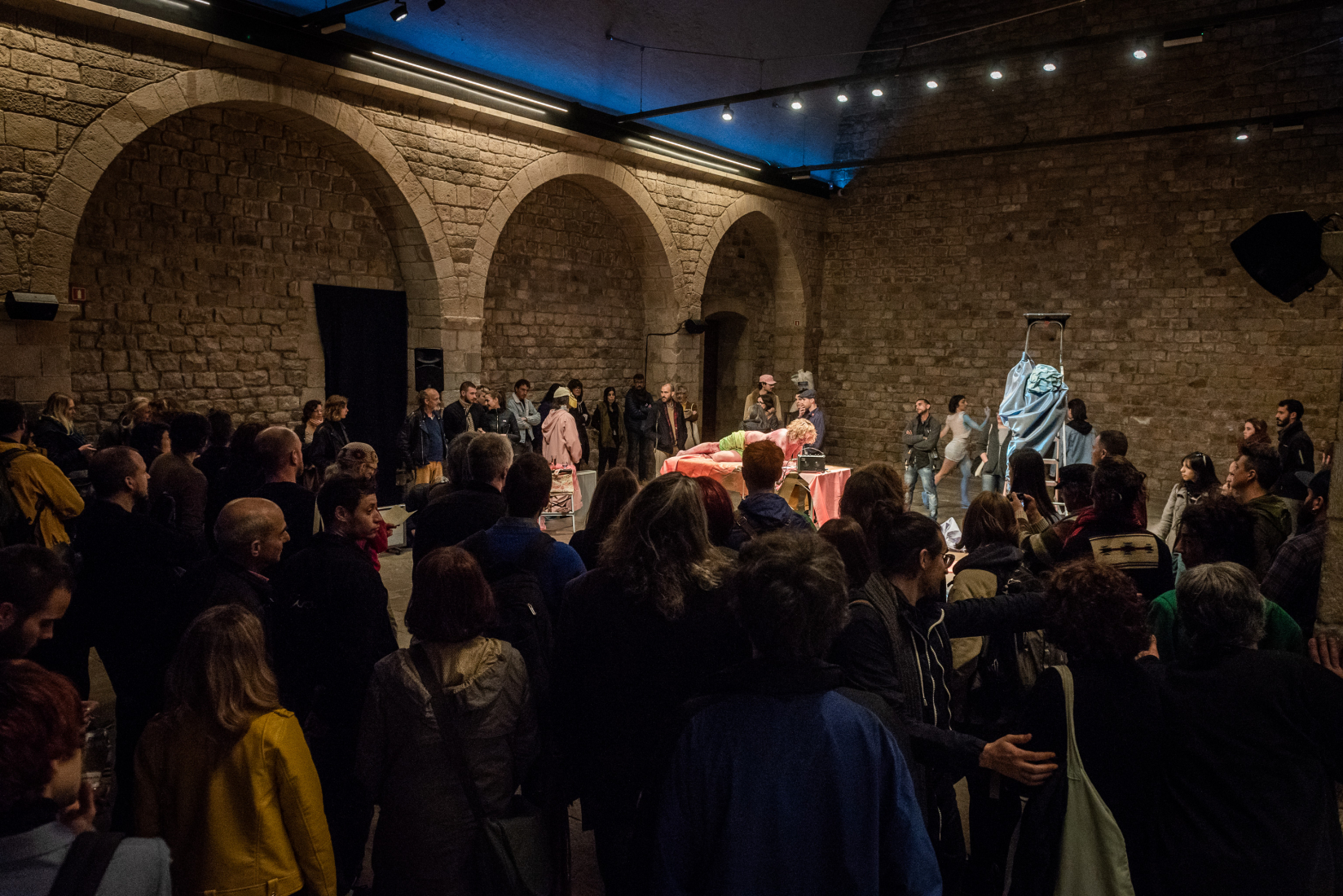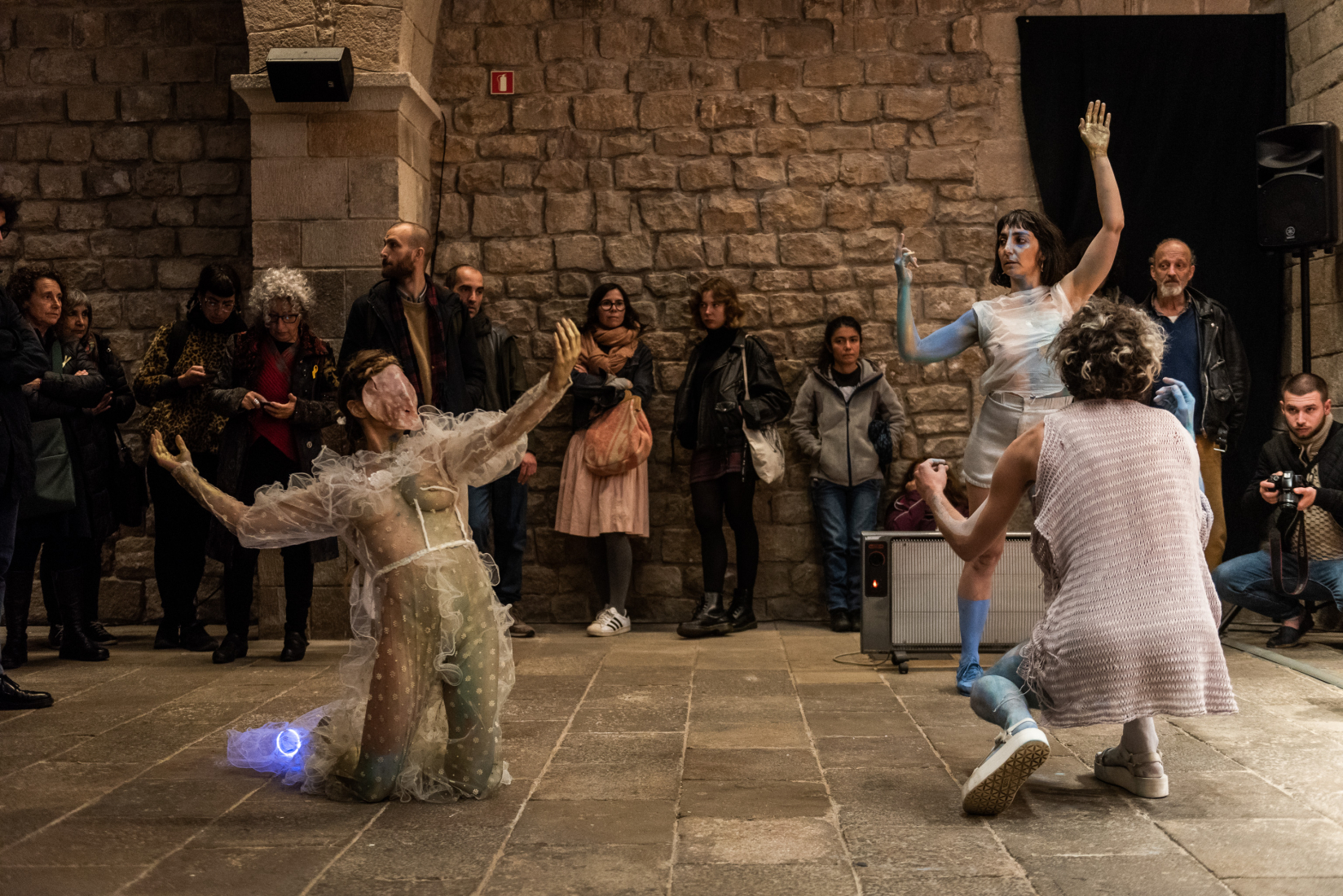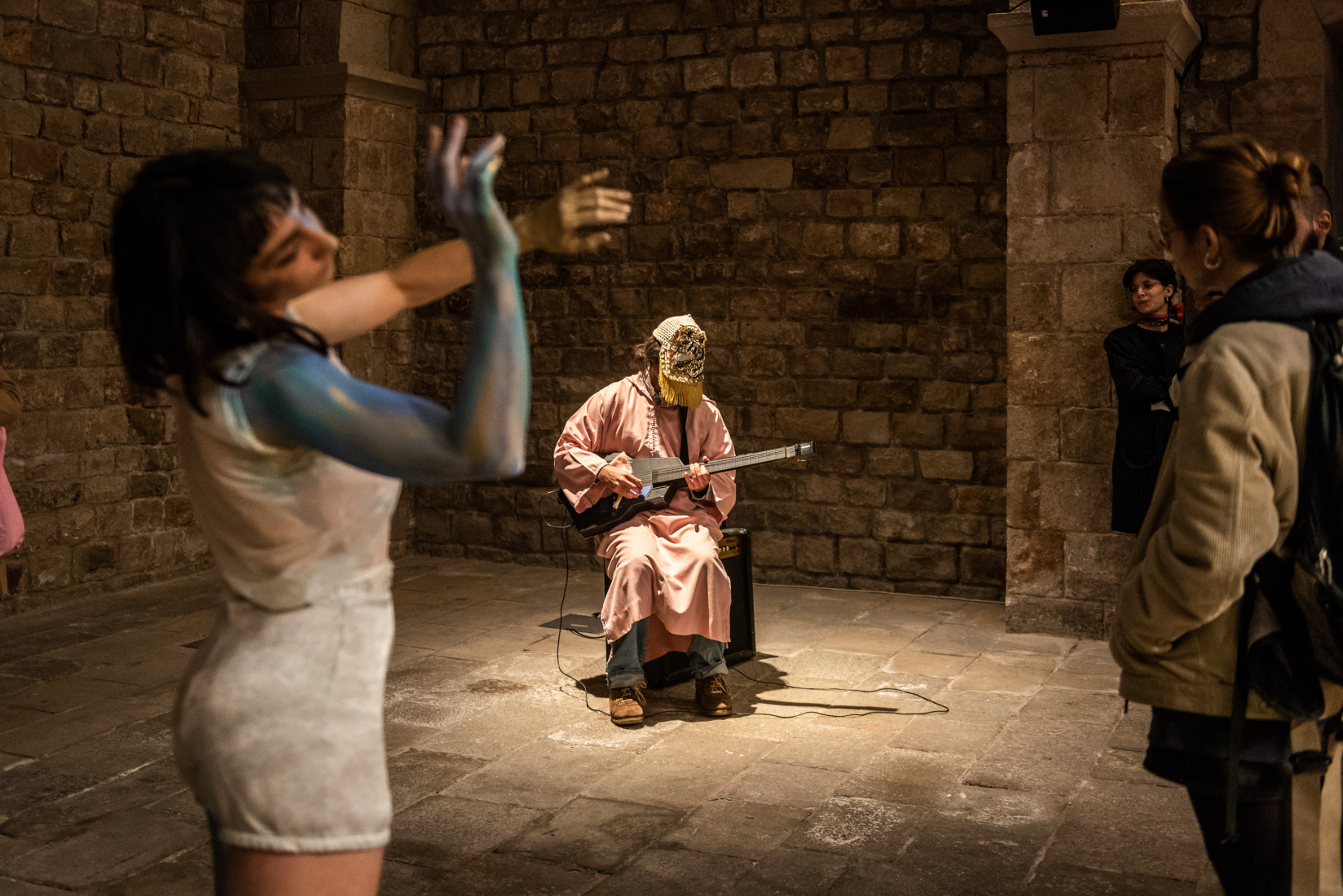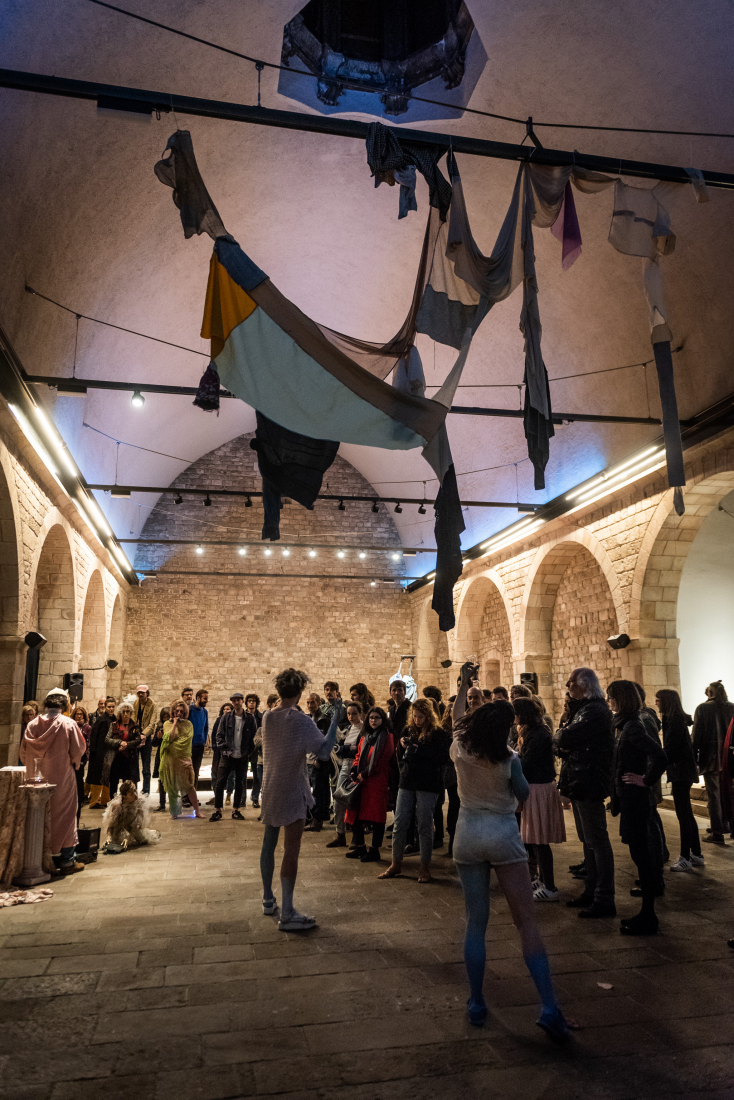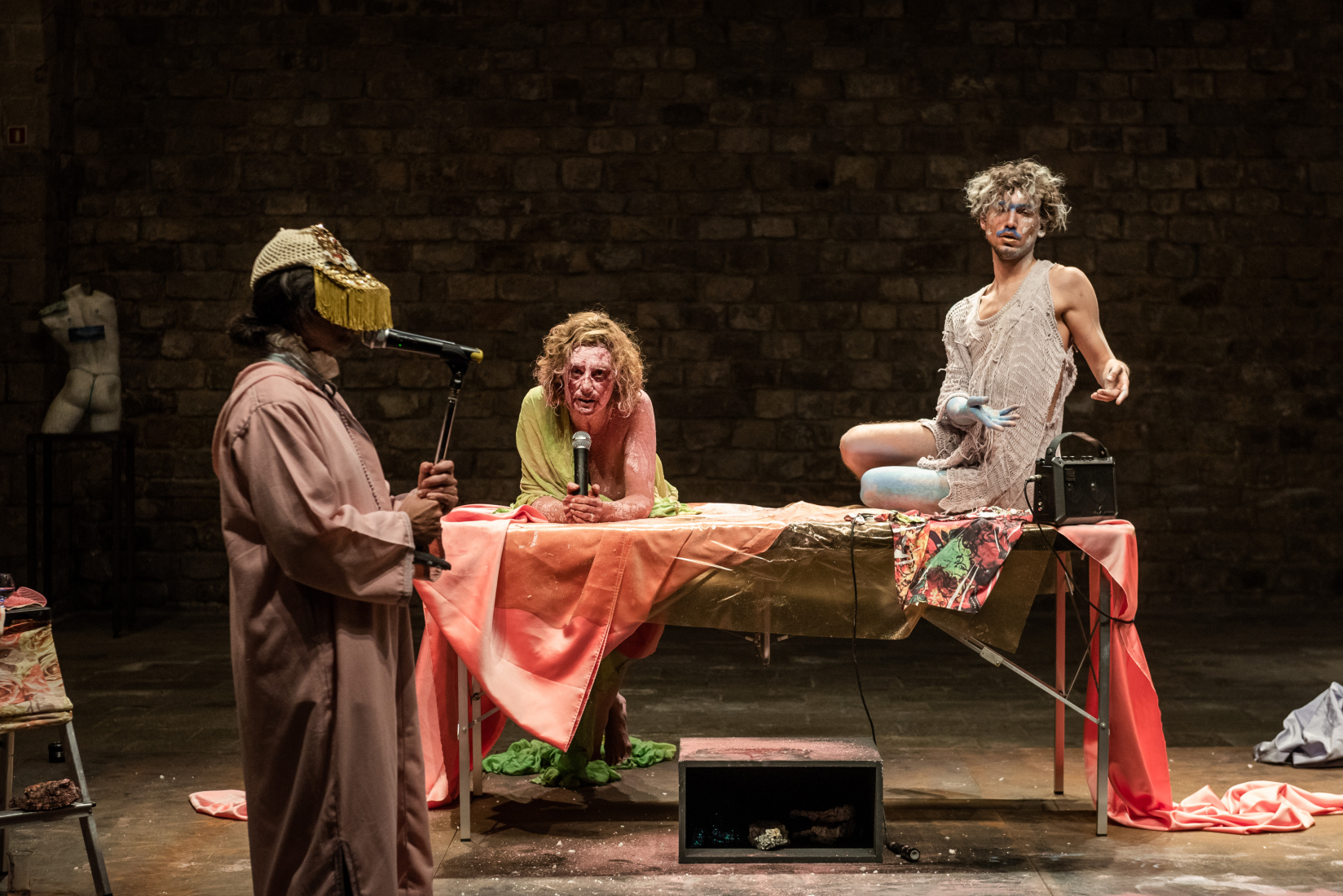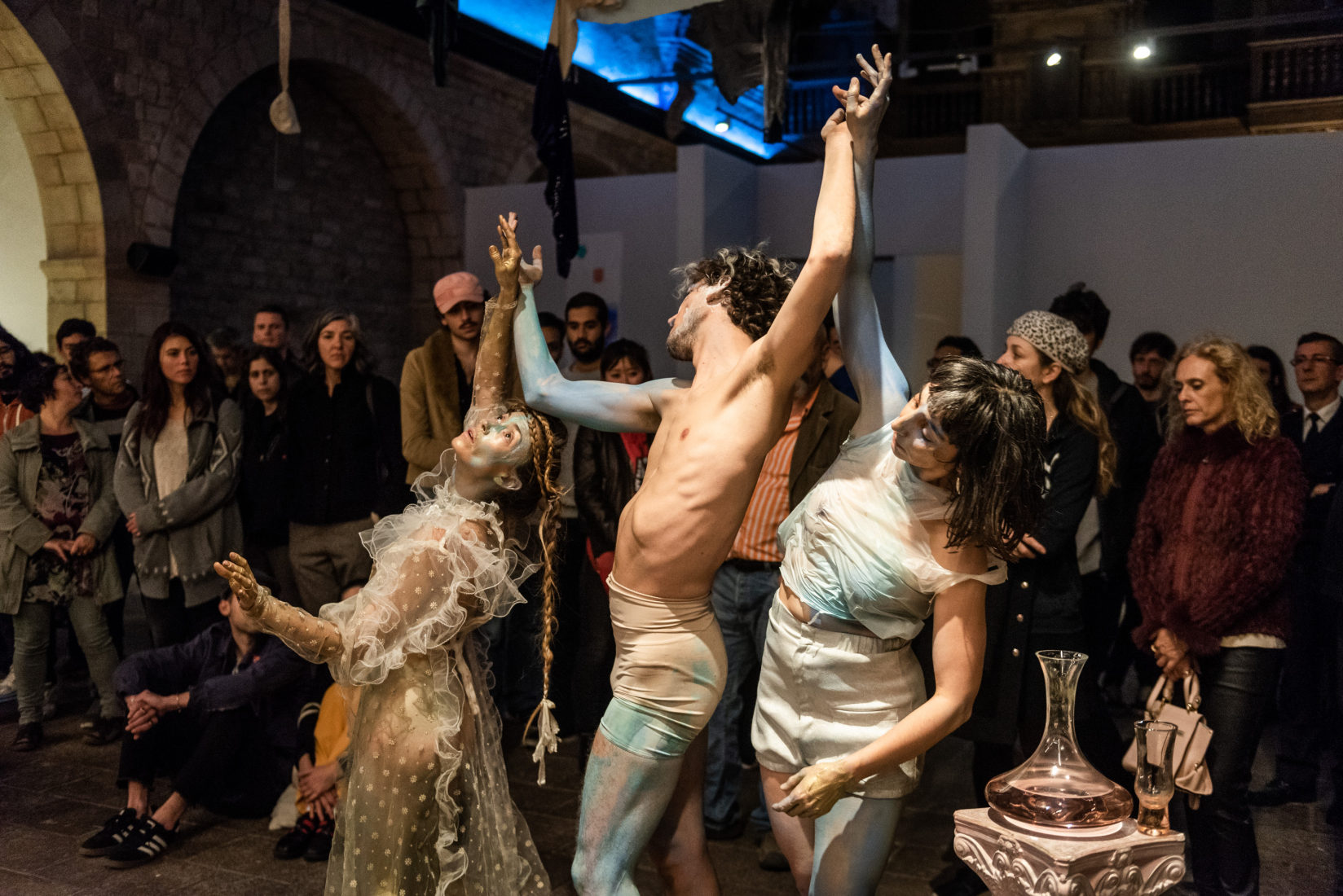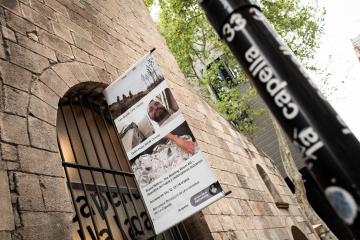Fine Cherry
The first dancer to bring the teachings of Isadora Duncan and her style of free dance to Catalonia was Josefina Cirera, also known as Fina Cirera, a name that means ‘Fine Cherry’ in English.
Very little is known about Fina Cirera except that in the early 1930s, she did a tour of Roman theatres with the Banda Republicana, playing the lead roles in the Greek tragedies Electra and Medea.
However, her name calls to mind another name and person about whom we do know a lot, Cherry Vanilla, a wayward grand dame of punk of the 1970s who went from being a groupie to Warhol’s favourite actress in his play Pork. After this, she worked as a controversial publicist for David Bowie (using marketing tactics as punk as offering blowjobs to any DJ in New York that would play Bowie’s records). Eventually she brought out her own album, Bad Girl.
What happens if we mix a free dance movement with the punk aesthetic? Or vice versa: a rebellious punk movement within a modernista look or the aesthetics of Greek mythology? What would happen if we raised the renegade Graeco-Roman body from the catacombs and dressed it in modernity?
In exploring these two aesthetics, we create a third that reveals itself in a body-(dis)composure. We offer our dance as a human sacrifice that makes the wheels of history go further and then finds itself dragged beneath them. We use the human body as a living archive of the representation of the female form, from Boadicea to Beyoncé, subverting the established ideals of physical beauty in art, fashion and popular culture from the time of the Romans to the Romantics in order to question our collective vision today. Rather than following the latest trend of taking dance into museums, our aim is to take the museum to the dance in order to shake up and renew its grammar. Like the goddesses of the Parthenon in the British Museum, we have been moved and stripped from our natural context and we find ourselves in the public eye as an object to be scrutinised and marvelled at. So much so that the polemic on how the female body is to be presented in contemporary society, between burkinis and Birkin bags, is so over the top that something as stupid, meaningless and surrealist as putting a slice of cooked ham on your face (tranche de jambon) can become an extremely thoughtful and potentially very offensive political strategy.
But, of course, it is not our intention to offend anyone with our disfigurements. In the end, Fine Cherry is merely a play on words. In the end, Fine Cherry is an excuse for painting ourselves gold, dying our hair fuchsia and going crazy. In the end, Fine Cherry is a call for personal freedom in a post-apocalyptic landscape.
Our aim is to mount a huge pop-punk-glam-trash-glitch Graeco-Roman bacchanalian feast as a way of resisting the occupation and colonisation of the body poetics by capitalism, in a tribute to the freedom of the body and an endorsement of its power to transport us as a gateway to the great mysteries of art. A collection of lost archives of the future. The post-apocalypse is a psycho-aesthetic condition. Aesthetic junkies who have overdosed. The kitsch is the new rococo.
“Hello, daddy. Hello, mom.
I’m your ch-ch-ch-ch-ch-ch-ch-ch-cherry bomb!”
The Runaways, 1976
Les Brontë is an artistic duo based in Cadaqués, the home of the divine Dalí, and consists of the dancer Victoria Macarte and the textile and visual artist Rosa Tharrats. Les Brontë met in 2011 while working on Albert Serra’s film The Story of My Death, in which the light of Casanova meets the darkness of Dracula. They filled the hours off set in the châteaux and castles of France and Transylvania by playing with the period costumes and mounting small performances to entertain the actors waiting to go on. This provided the inspiration to continue with a collaborative artistic project, which they dubbed Les Brontë.
They have brought their Neotaxidermia aesthetic project from its origins in Berlin to Barcelona and places in Spain’s rural heartland thanks to curatorial initiatives run by the AADK group.
The duo’s work has expanded to encompass dance, performance, fashion, music, video, installation art and the visual arts, which are of a primordial aesthetic transposed into the digital era. Their work has evolved, but it is based on the concept of ‘Neotaxidermy’ as the transfer of an image or essence, tangible remains of ideas or recollections. Capturing the ‘retromania’, cultural appropriation and wild propagation of today’s trends with visual and live performance elements as the folklore of our time. Period science fiction. A collection of lost archives from the future. The post-apocalypse is a psycho-aesthetic condition.



